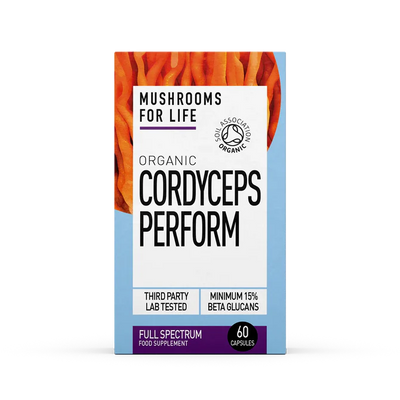A.Vogel Talks Hayfever
Find out all you need to know about hayfever and how to combat those dreaded symptoms!

Hayfever can broadly be described as an allergic reaction to pollen. It is a common affliction, affecting approximately a quarter of the UK population and it normally develops during adolescence. There are many symptoms associated with hayfever, such as irritated eyes, a runny nose, sneezing or a skin rash. Here we explore these symptoms and their underlying causes while offering advice on a range of herbal and self-help treatments.
An introduction to hayfever
Hayfever is a common problem usually encountered in the spring and early summer. It is part of the group of health conditions known as allergic rhinitis – allergies to airborne substances which lead to inflammation in the lining of the nose, throat and eyes.
What is hayfever?
In the main, hayfever refers to an allergy to pollen. If one is allergic to animals or house dust, this is referred to by doctors as ‘allergic rhinitis’. However, the terms ‘hayfever’ and ‘allergic rhinitis’ are often used interchangeably.
It has been estimated that up to 25% of people in the UK and other industrialised Western countries suffer from hayfever. People prone to the condition tend to develop the problem during their teenage years and, although the condition lessens in severity with age, it can linger well into late adulthood.
Hayfever is associated with two other health conditions, eczema and asthma, in what doctors term the ‘atopic triad’. Someone suffering from one of these conditions is more likely to develop one or both of the others. Atopy, or this type of allergic tendency, can also run in families.
What is the cause of hayfever?
Hayfever is caused by an abnormal (or allergic) reaction of the body to pollen coming into contact with the nose, eyes or throat. The body’s immune system reacts to this usually ‘harmless’ substance as it thinks that, for some reason, it is ‘harmful’ – as if the body were being attacked by a potent virus.
As the immune system over-reacts, it releases large amounts of a chemical known as histamine. This causes itching, inflammation and irritation in the local tissue. Why the immune systems of people with hayfever over-react in this way is not known.
Pollen causing hayfever can come from grass, trees or flowers. In temperate climates such as in the UK and Ireland, pollen levels increase dramatically in spring as Nature comes to life.
As the weather warms up, grass, bushes, trees and other plants grow and develop in a coordinated fashion. In this way, pollen levels are highest during spring and early summer. In countries which are warm all year round, plants do not have these coordinated phases as they are able to grow and flower all year round. This explains why hayfever does not tend to be a problem in say, tropical countries.
Pollen levels in the UK are very much dependent on the weather. A week of dull rainy weather followed by a few days of warm sunshine, can drive pollen levels sky high – not good news for those with hayfever.
People suffering from hayfever may also be more sensitive to one form of pollen than another. This adds to variations in symptoms from month to month and also, from one area of the country to another.

Hayfever symptoms
The main symptoms of hayfever are experienced in the eyes, nose and throat. These include:
- Sneezing
- Itchy or runny nose
- Irritation at back of throat
- Itchy or runny eyes
- Blocked Nose
- Dry Cough
When severe, hayfever can give rise to a general feeling of being unwell as the immune system sets off such a strong reaction affecting the whole body that one has to take to one’s bed – this is said to explain the ‘fever’ bit of hayfever. In some, high pollen levels can also trigger asthma.
Hayfever treatments
Hayfever can be treated using a wide variety of methods including:
- Antihistamines in tablet or nasal sprays. These are available from your doctor. Some may be obtained, without a prescription, from your local pharmacy
- Steroids or other anti-inflammatory medicines
- Nasal sprays and eye drops for irritated eyes – these help to soothe the tissues, helping to wash away pollen
- Decongestants – these can be useful in relieving stuffy noses
- Herbal and homeopathic medicines
Severe, chronic cases of hayfever may be treated in a hospital by suppressing the body’s immune response or desensitisation, using a variety of methods.
Helping yourself
One of the obvious ways to prevent hayfever is to either avoid, or reduce the amount of pollen one comes across.
In general, pollen counts peak at mid-morning and early evening on dry days. Sunny weather means more pollen and counts are higher on a windless day. However, we can’t control the weather, so steps that you can take to reduce your exposure to pollen include:
- Avoid coming into contact with pollen by steering clear of fields and parks (lots of grass), or sitting next to a bunch of cut flowers
- Keeping your windows shut when the weather is good, especially bedroom windows
- Drive with your windows shut. If your car has air-conditioning, use it
- If you have been outdoors, shower and change into clean clothes as soon as you get indoors
- Wear those trendy wrap-around glasses to protect your eyes, even on a dull day
- Finally, keep an eye on pollen counts using weather reports.






